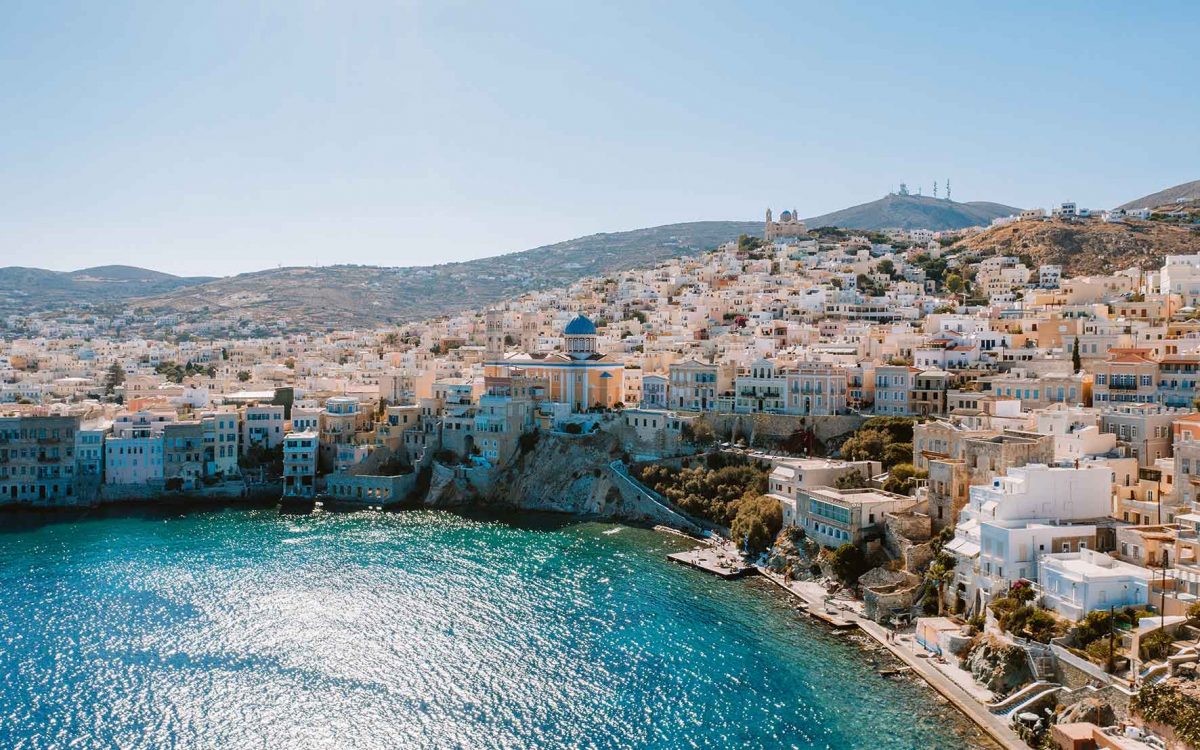Greece’s coolest towns are — wait a minute, is it really possible to list only six? And doesn’t any such list begin and end with Athens? Well, yes and no. It’s true that Athens has enough variety and scope to please the most demanding of cool hunters, but the whole truth is that beyond wider Greece’s iconic natural beauty there are numerous slices of urban Grecian coolness that should be on your radar. First, it almost goes without saying, is Thessaloniki.
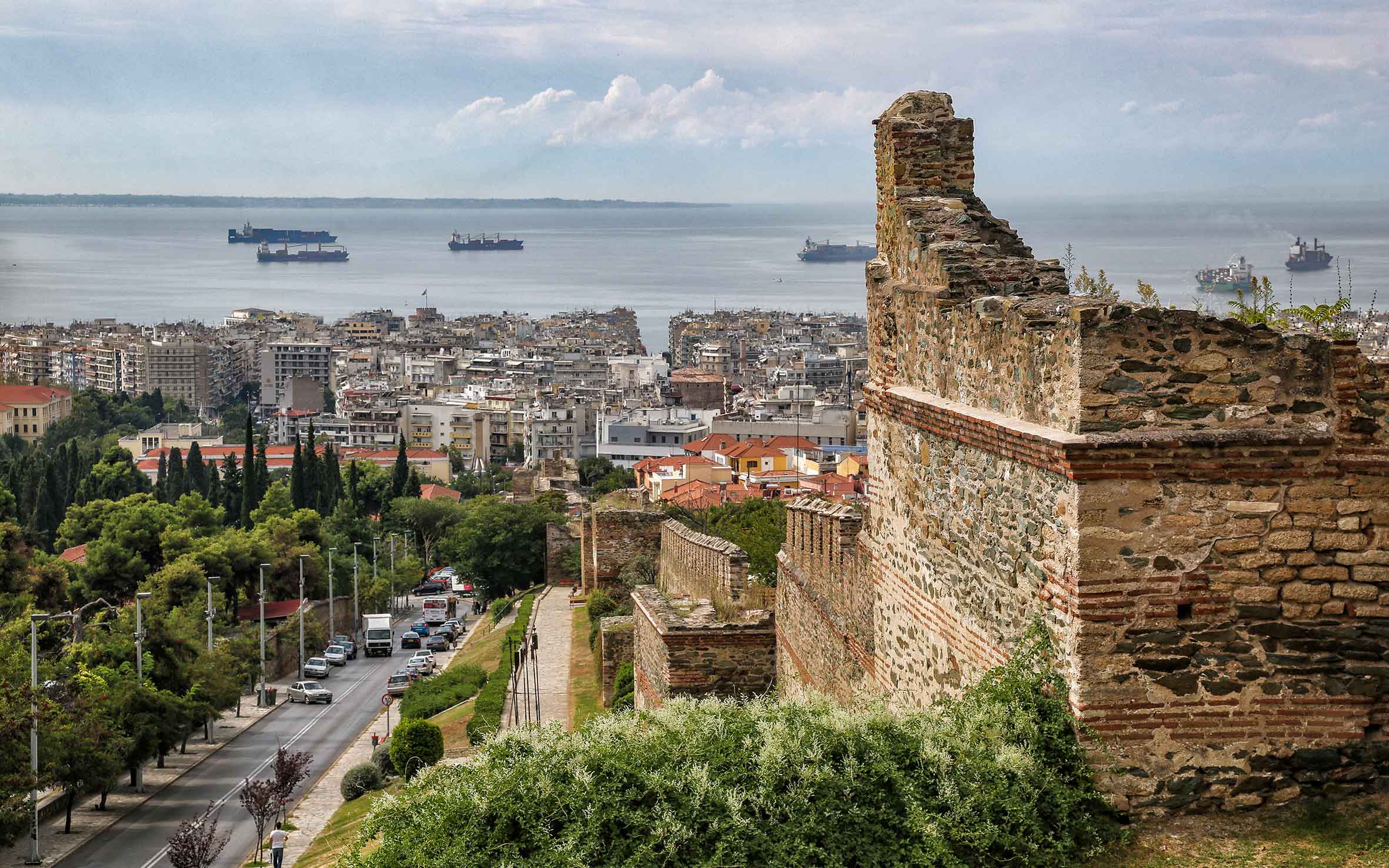
© Nicolas Economou
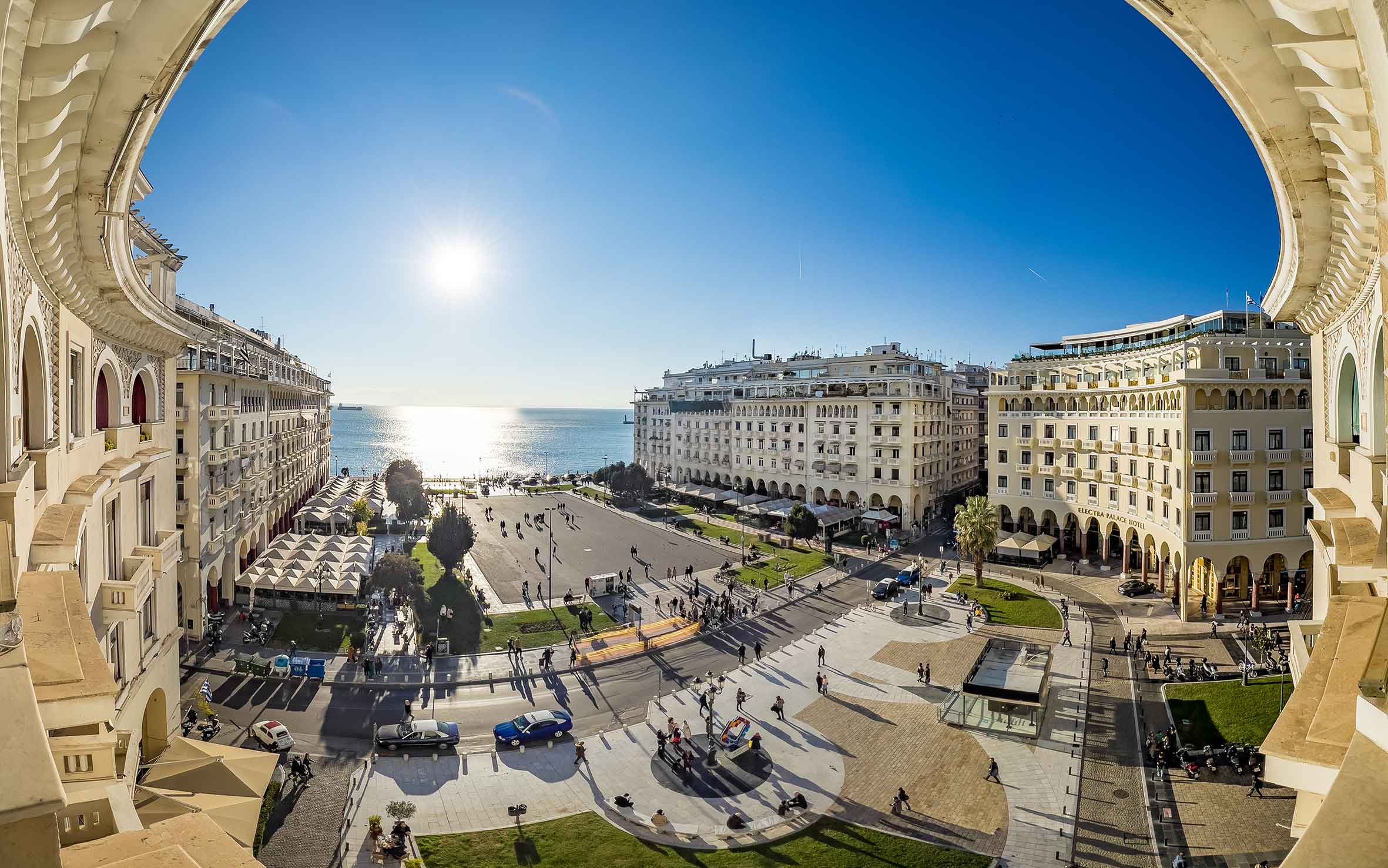
© Shutterstock
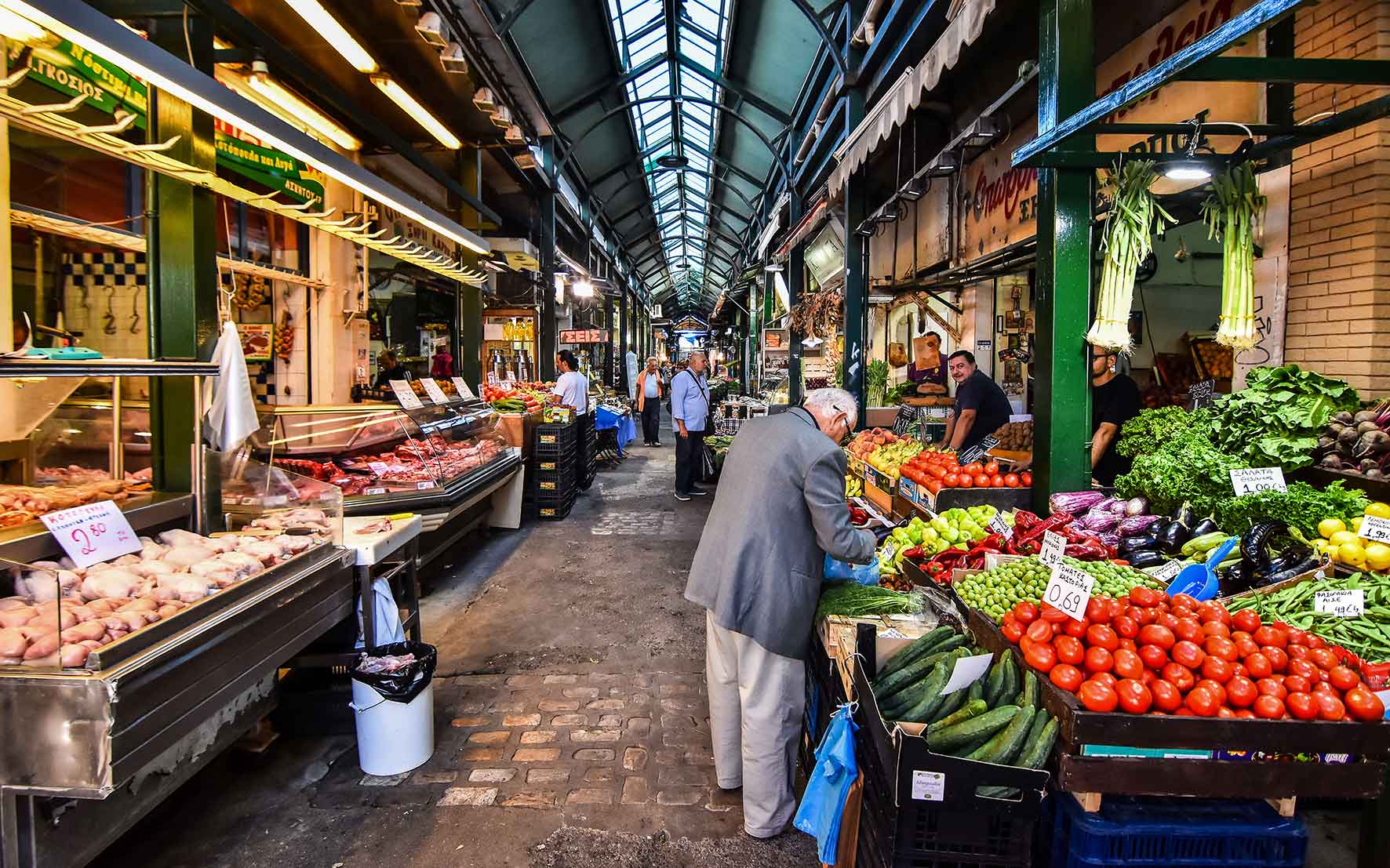
© Shutterstock
Thessaloniki
Greece’s seaside second city was established in 316 BCE and was named after a half-sister of Alexander the Great — that in itself is pretty cool. There is a mountain of history in Thessaloniki, so don’t expect to be able to climb it in one go. Amble about and let the Roman and Byzantine ruins come to you. There is plenty of crossover — as just one example, the iconic, fourth-century Rotunda was commissioned by the Roman Emperor Galerius but later altered to become a Christian church. The Modiano market marries modern style with fascinating Jewish roots.
There is a rich faith heritage in this teeming, soulful metropolis, and the history is sometimes heavy, sometimes light. “No man will be without a homeland, as long as Salonica exists,” wrote the 14th-century Byzantine scholar Nikephoros Choumnos. And no visitor will leave hungry, either: In this beguiling city of unpredictable juxtapositions, there are also so many good restaurants and classic cafes that a long weekend to try just some of them won’t be long enough.
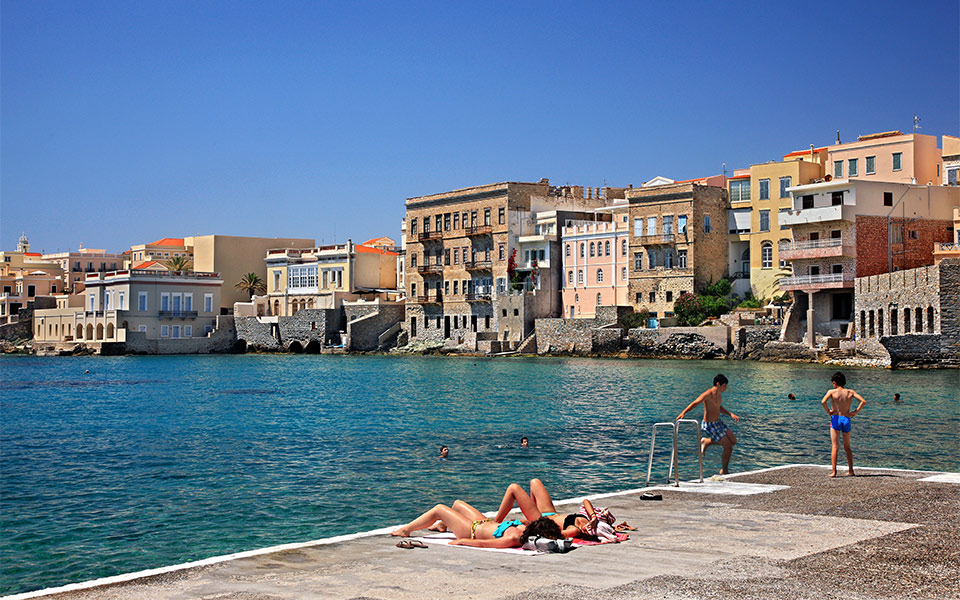
© Shutterstock
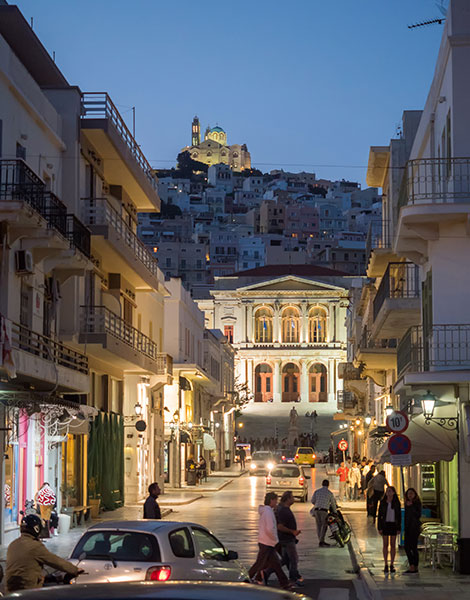
© Shutterstock
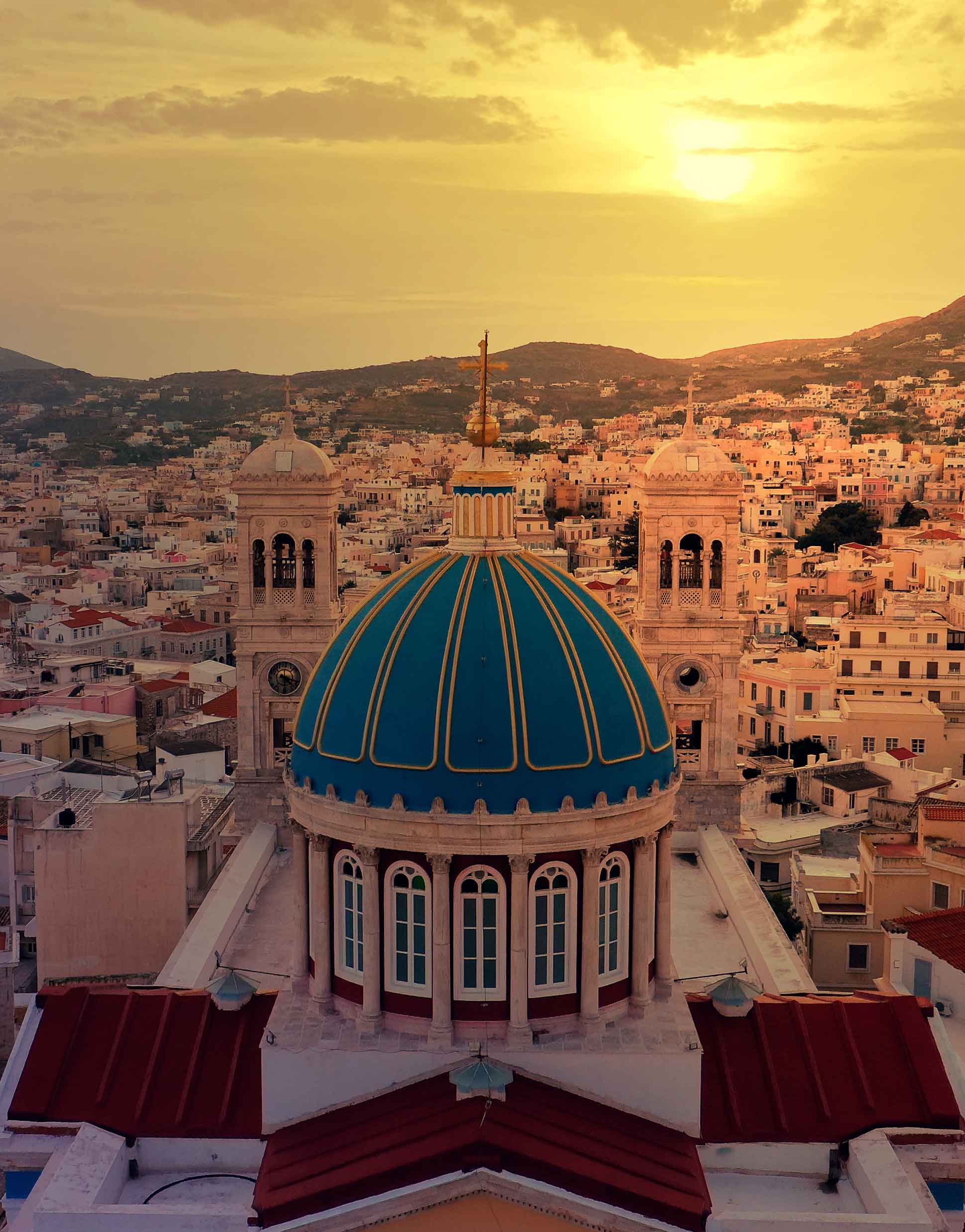
© Shutterstock
Ermoupoli, Syros
Ermoupoli on the island of Syros is a secret bastion of Cycladic coolness, but it is not likely to remain secret for much longer. In the old days of slower and less frequent ferries, Syros was for many travelers to Greece just the place where the boat stopped before sailing on to nearby Mykonos. But that reputation as a transit point belies the island’s significance in Greek history. When the Greek Revolution broke out in 1821, Syros absorbed Greek refugees from some Aegean islands that were still under Ottoman occupation.
The new arrivals greatly enriched the main port of Ermoupoli, which took on the air of a small city of Western Europe. Marked by fanciful Italianate architecture in the Vaporia neighborhood it boasts plenty of spots to take a dip in the blue-green water. Ermoupoli is also emerging as a Cycladic dining destination, with breezy spots like Avant Garden and Chef Alex Karakatsanis’s “food and culture” restaurant San Michali winning wide praise.
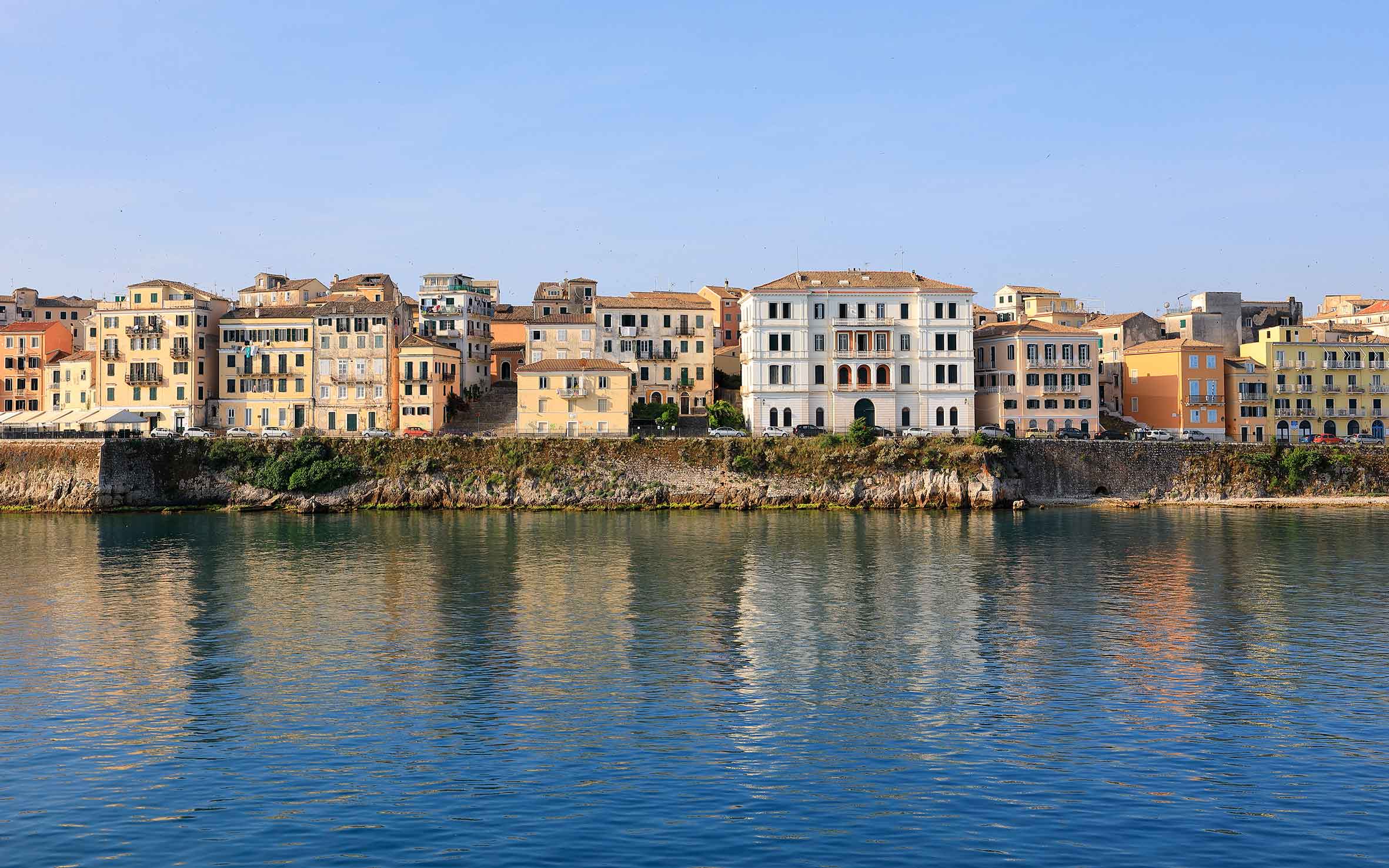
© Shutterstock
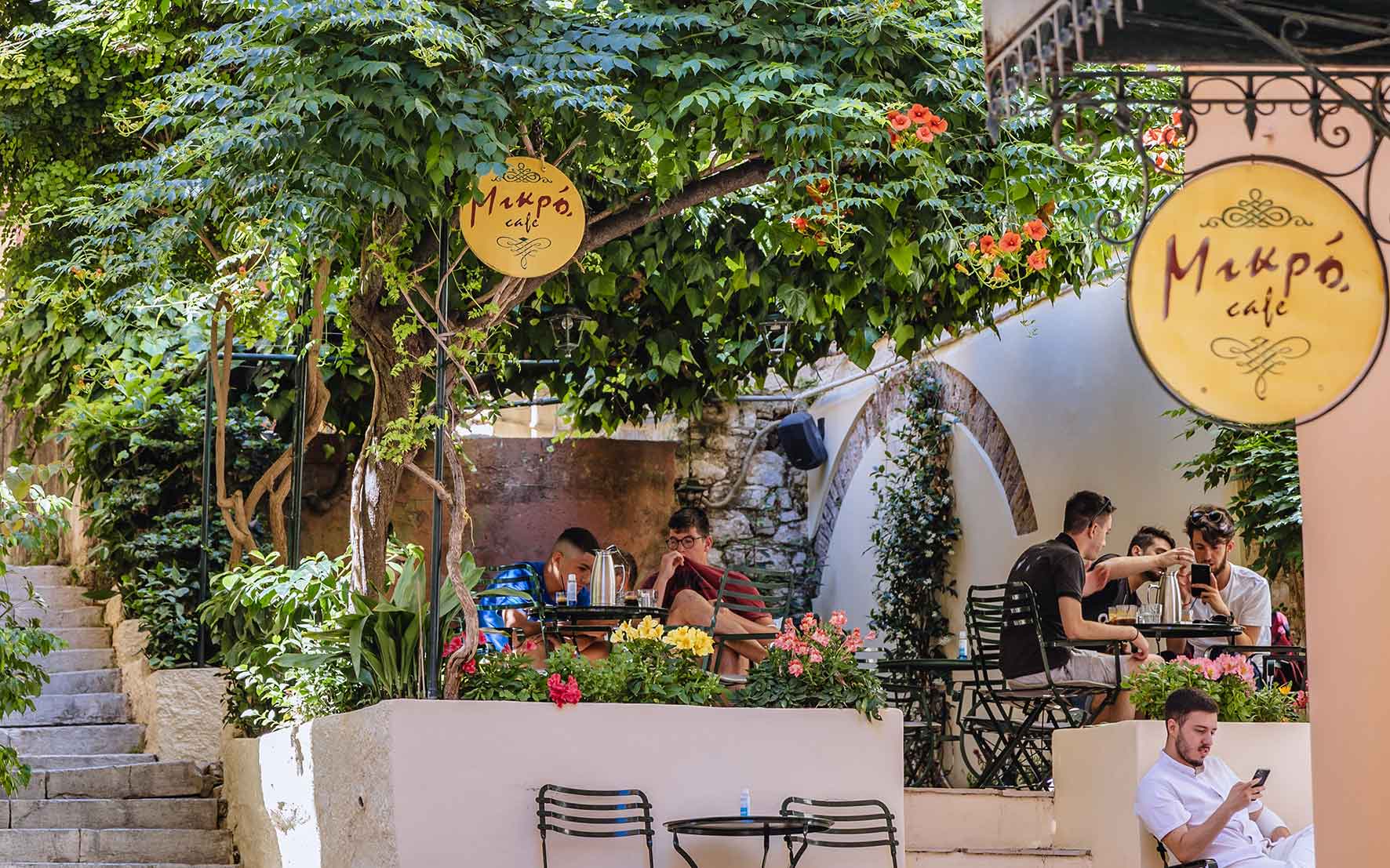
© Shutterstock

© Shutterstock
Corfu town, Corfu
Corfu Town is one of the most beautiful “old towns” in the world, and it has been cool for a very long time indeed. It made quite an impression on many famous writers, particularly British ones, and including the late Jan Morris who filed a report for The New York Times following a visit there in 1974 — not so very long ago in Corfiot history. She noted that the British Empire succeeded the administrators of the Venetian Empire as rulers of Corfu in 1815. She also described the view from the waterfront of Corfu Town as one of the most splendid views in Europe: “The town stands pinkish and cluttered above its quays, the bay bustles with ferries, freighters, motor caiques, and cruise ships.”
“Time has softened the militarism of the island, yet Corfu is still dominated by castles and lookouts,” Morris observed. “Trumpets seem to sound still. Winged lions scowl from fortified gates.” She added that “Corfu town looks unmistakably Venetian—tall and jumbled, crammed between its protective forts beside the port, and crowned here and there with campaniles as Venetian as St. Mark’s itself—from whose belfries, on Sunday mornings, marvelously cracked and fruity bells ring out across the water.”
Less eloquently put, Corfu Town is cool, and you should go and see it for yourself.
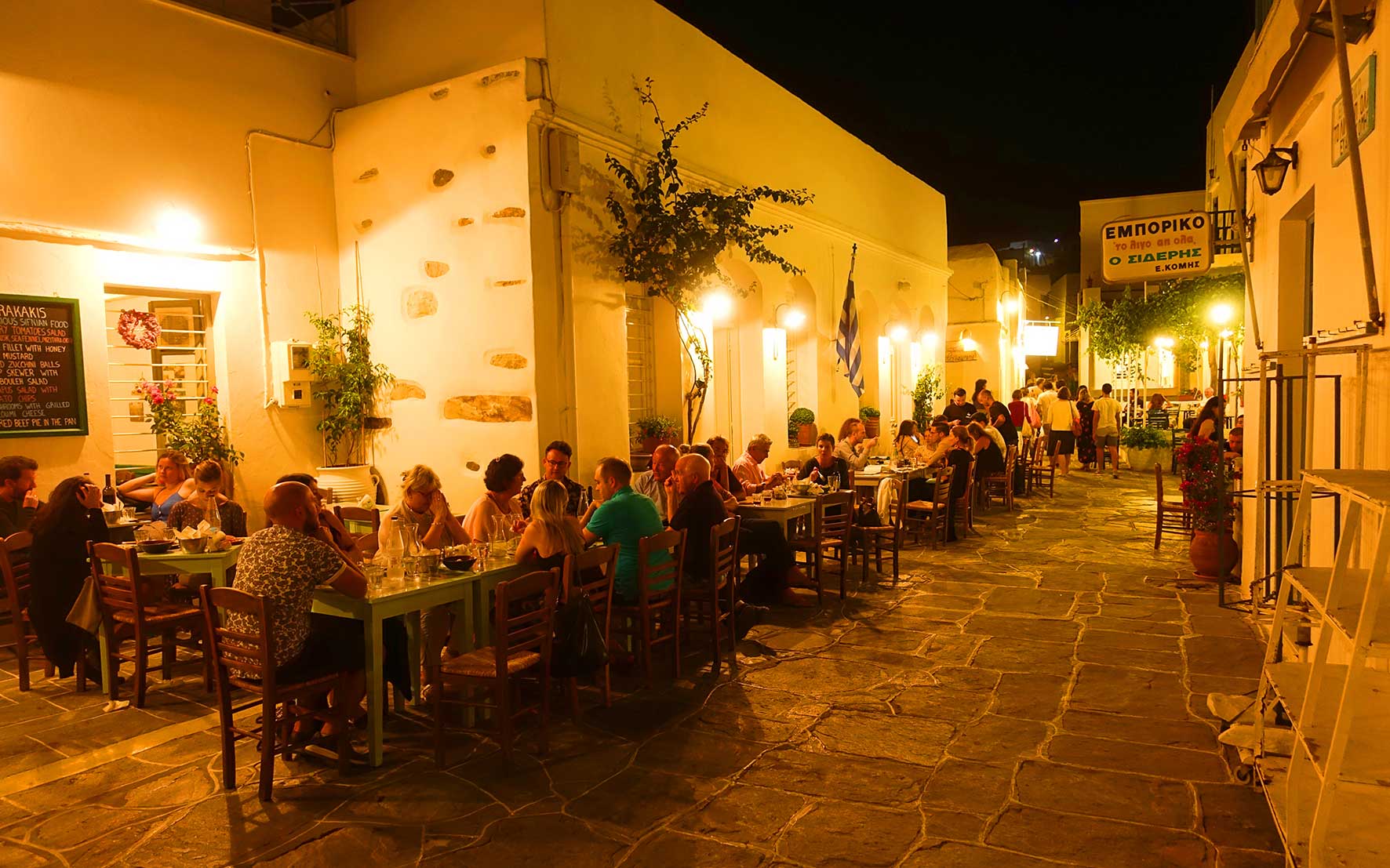
© Shutterstock
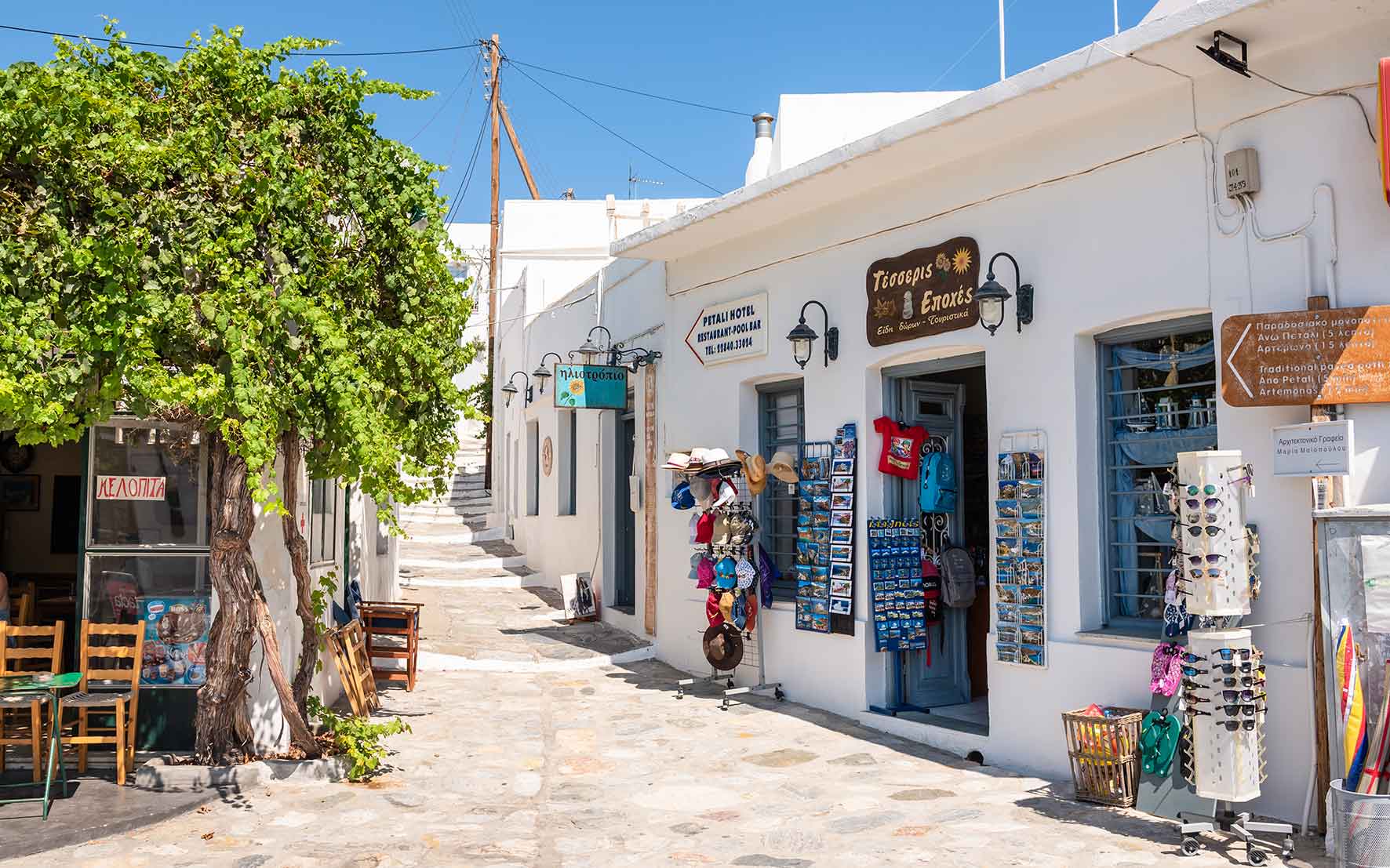
© Shutterstock
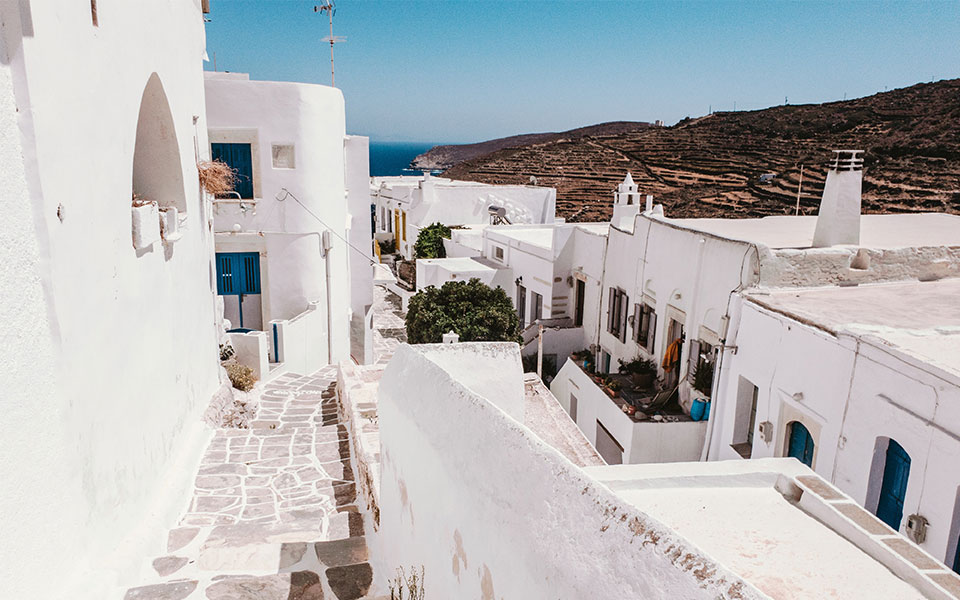
© Unsplash
Apollonia, Sifnos
Not a lot has been written about Apollonia, the capital, or Hora, of the lovely island of Sifnos, and that may actually be a factor working in its favor — in other words, it’s still cool. The town is spread out along a trio of hilltops in the center of the island, and is really a cluster of a half-dozen villages. Flagstone footpaths wind down to the town’s main square, Plateia Iroon (Hero’s Square), where the Popular and Folk Art Museum is a showplace for island embroidery, weaving, and traditional Sifnian earthenware pots and jars. The center is a low-key jumble of inviting cafes and restaurants.
You can follow a footpath down to Kastro, a medieval fortress town where tall Venetian-era houses line a maze of little lanes. In one of them, an archaeological museum shows off bits of pottery and friezes from the Greek and Roman city that occupied these heights 3,000 years ago. The prettiest sight in town is the Church of the Eftamartyres (Seven Martyrs), atop a sea-girt promontory far beneath a clifftop promenade that skirts the town’s outer flanks. But whether for coffee or a leisurely meal, Apollonia is where you will want to linger — Sifnos is renowned for its good food.
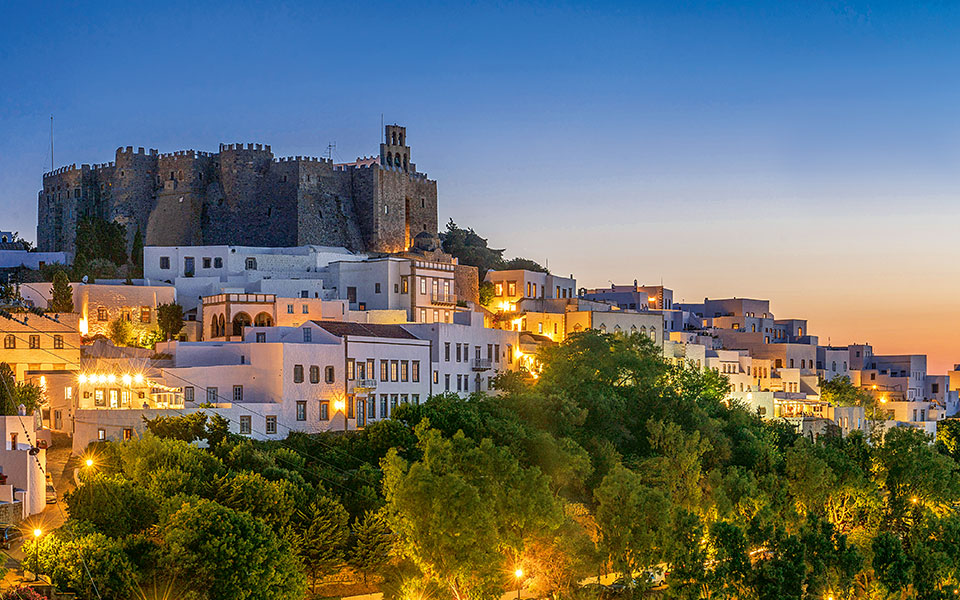
© Perikles Merakos
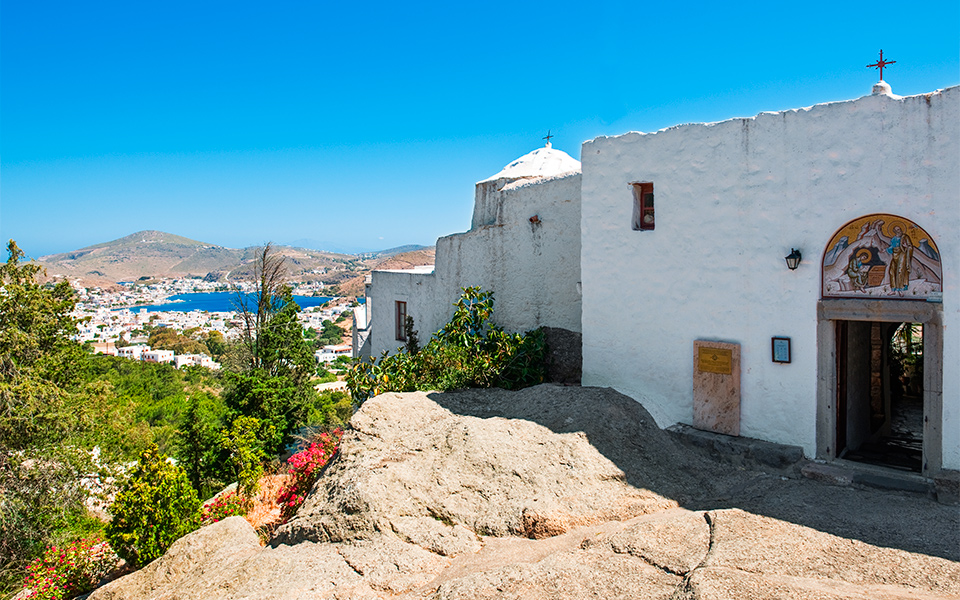
© Shutterstock
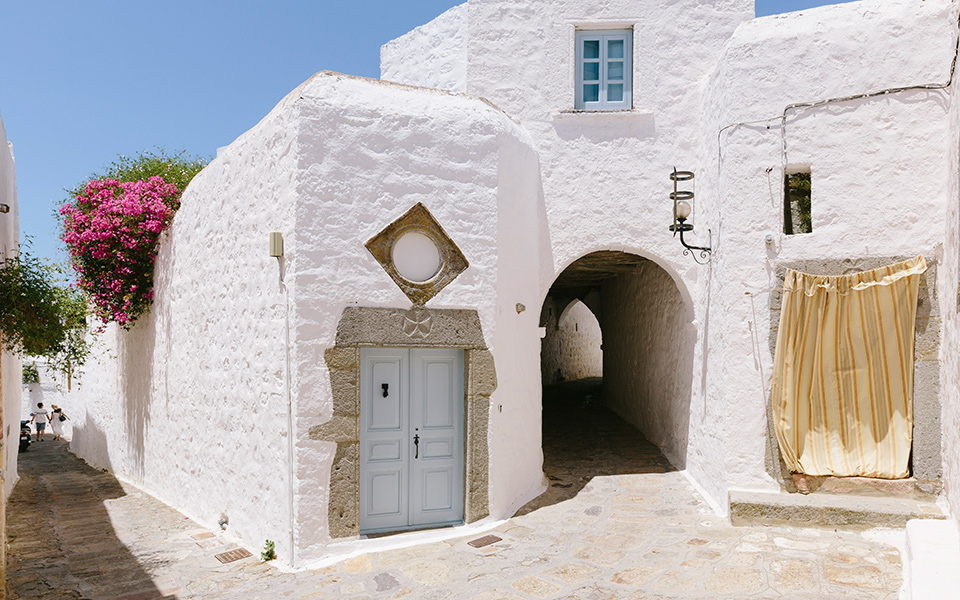
© Nicholas Mastoras
Hora, Patmos
To be fair — not that this is a contest — if one is to bestow a designation of coolness on two Cycladic cities, a Dodecanese candidate should be included too and that would have to be Patmos. The island’s settlement of Hora is one of the best preserved and most beautiful old settlements in the Aegean, having evolved without interruption since the 12th century. Many of the former merchants’ houses are now home to posh restaurants and cafes, which lie below the imposing Monastery of St. John the Theologian. The prevailing atmosphere is quietly cosmopolitan.
Its spiritual heart is the Cave of the Apocalypse where tradition holds that John the Apostle wrote the Book of Revelation, the final (and somewhat ominous) book of the New Testament. Beyond Hora, Patmos has an an alluring 63 kilometers of coastline that creates a ribbon of beaches and hidden coves, encircling an unspoiled landscape with rugged peaks that rise over hidden green valleys.
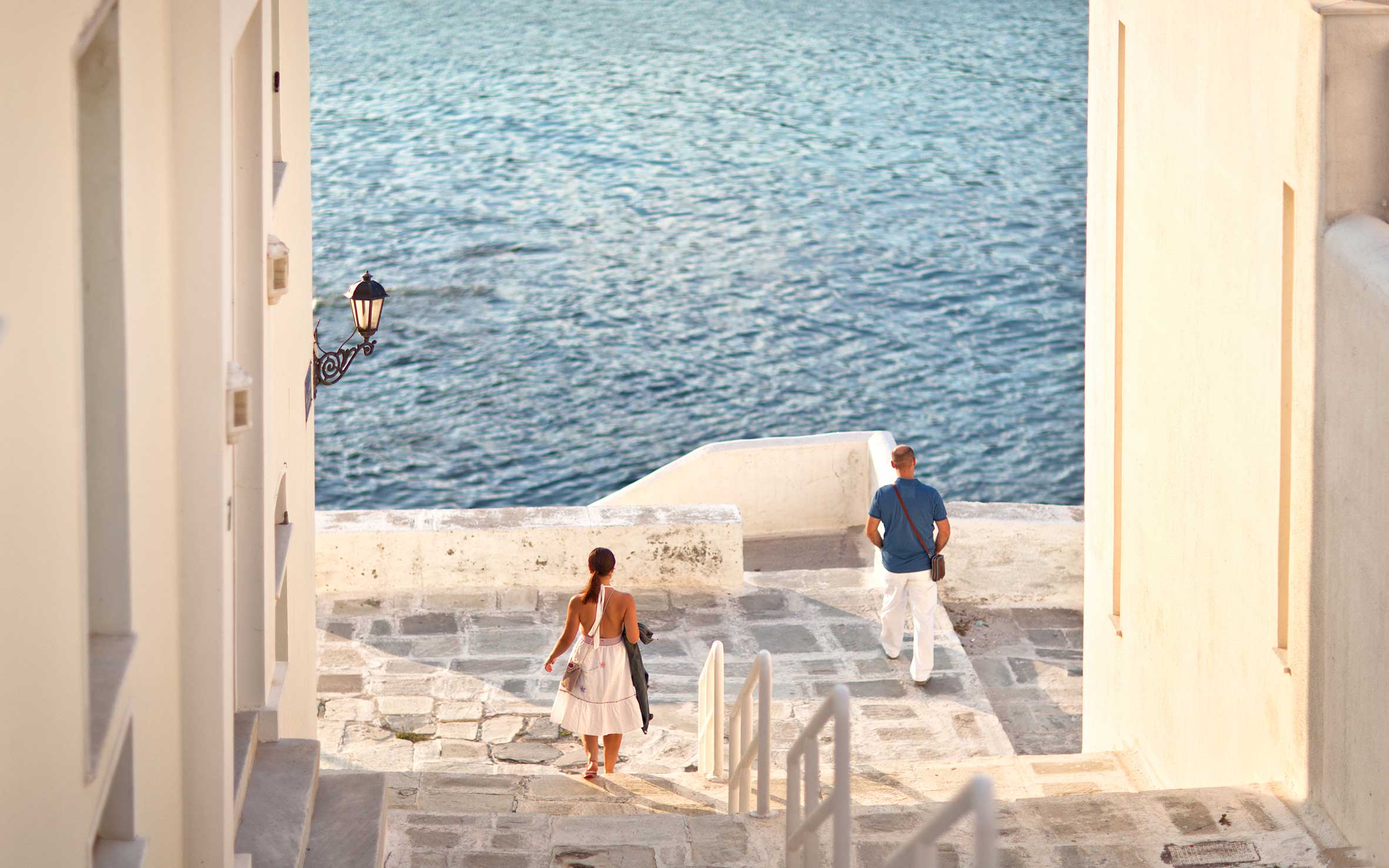
© Shutterstock
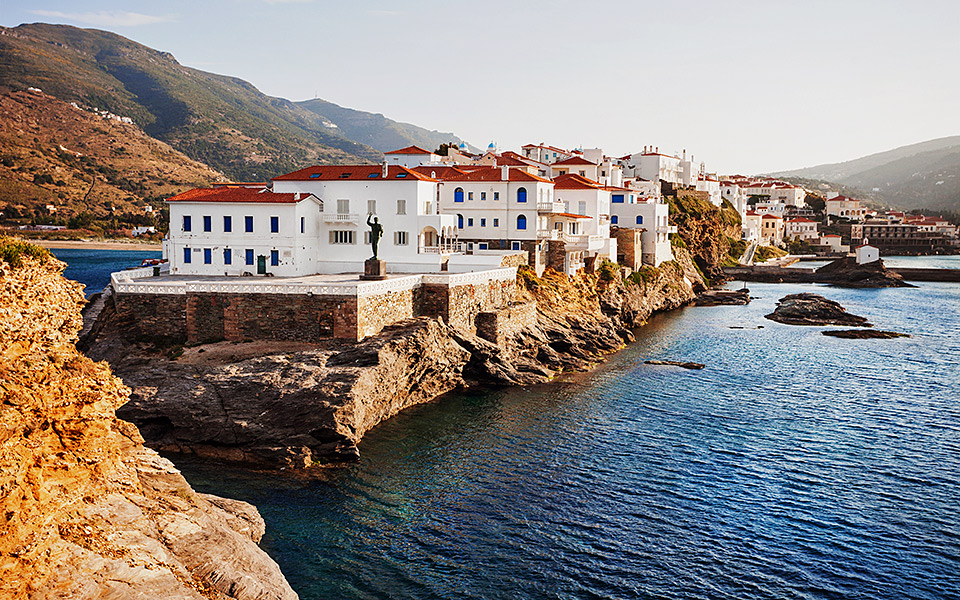
© Shutterstock
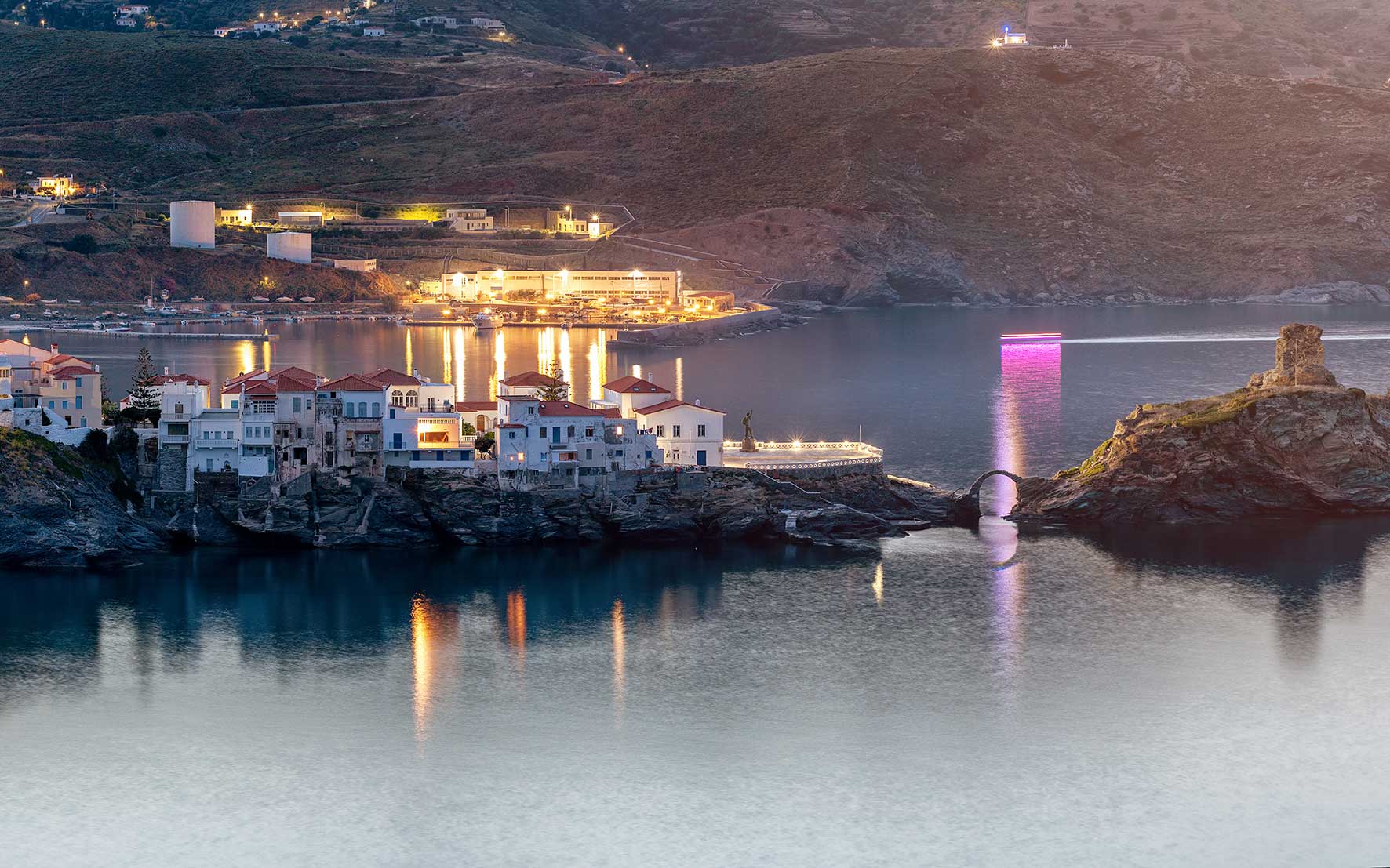
© Shutterstock
Andros Town, Andros
Mountainous Andros is the northernmost of the Cycladic island chain (which also includes Santorini and Mykonos) and as such, it’s an easy hop of under two hours from the mainland port of Rafina to the island’s port at Gavrio. But the chora is the eponymous Andros on the other side of the island. It’s a stately town with many neoclassical mansions originally built for local shipowners. Andros has a proud maritime heritage and many sailors from the island partook in the Greek Revolution right from the start.
Andros town is authentically Greek, but just because it isn’t glitzy like Mykonos doesn’t mean it isn’t worth your time. In fact, you will want to linger in the lively central square before or after a visit to the excellent archaeological museum. The Museum of Contemporary Art of the Basil & Elise Goulandris Foundation is also a must. A stroll through the oldest section leads to a seaside square at the end of a promontory that is home to a monument to the Unknown Sailor. It is a gracious and generally windswept space: quite literally, it’s cool.

